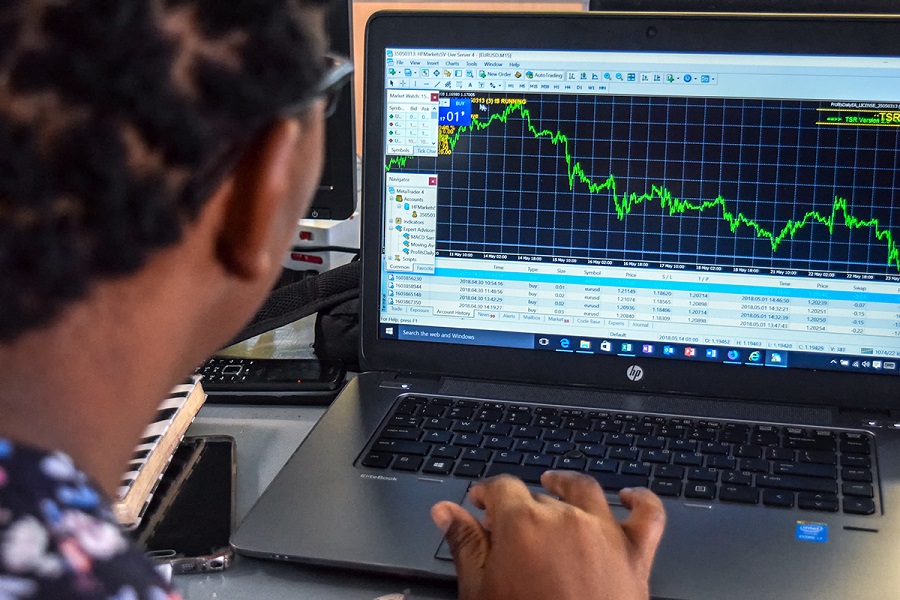Bank traders make up only 5% of Forex dealers, with the majority being speculators. However, bank traders account for 92% of all Forex trading activity.
Citi and JP Morgan Chase are among the biggest firms in the US, HSBC in Asia, while Deutsche Bank holds sway in Europe.
Global banks are large and possess immense wealth. Scale is a significant advantage in the world of FX trading.
The more money you own, the more trading and market power you can exert. JPMorgan Chase, the world’s most valuable bank, had $4.1 trillion in assets and $337 billion in stockholders’ equity as of March 31, 2024.
JP Morgan surpassed Citi to become the leading US dealer for foreign exchange trading revenues in 2023, with over $5.5 billion in revenue for the year.
These banks are frequently market makers. This means that purchasing and selling currencies provide the market with liquidity.
Consequently, they have a significant impact on the value of currencies, especially major ones like the U.S. dollar, Euro, and British pound.
Proprietary strategies, network effect, and fast execution
Banks base their trading decisions on intricate algorithms. To compete, you’ll need to follow suit. Begin by studying Python coding and creating a trading algorithm that outperforms the competition.
Network Effects: These banks typically serve a vast customer base, including institutional investors, businesses, and other banks. They have access to a wealth of information and trading opportunities because of this network. Experts attribute the bank’s extensive client and customer network to this.
They benefit from companies and investors positioning themselves for such situations since they have access to “private” information that individual investors do not.
Experience: For many decades, banks have traded this asset class and served as forex brokers for smaller banks. They can use their extensive experience and knowledge to make well-informed trading decisions.
Information Availability: Banks have access to valuable data that regular traders do not. To help them make wise trading decisions, they employ teams of analysts who pore over charts, economic data, and central bank policies. Additionally, they have access to insider knowledge that provides a competitive advantage.
Trade at Blazing Speed: Banks can complete transactions in milliseconds. To compete, invest in a supercomputer and upgrade your internet connection to fibre-optic cable.
Pay Attention to Long-Term Trends: Banks frequently observe the market long-term, searching for patterns that may endure for several months or even years. They often consider factors like interest rates, economic data, and central bank policies while making trading decisions.
Risk Management is everything
Banks are notoriously risk-averse and frequently employ advanced risk management strategies to reduce their exposure to the market. Retail traders often see FX trading as an avenue to make quick money.
However, banks don’t ignore the danger of loss as much because they have strong risk management procedures in place.
By using such a strategy, a trader might mitigate the negative consequences of a losing deal when the market moves oppositely.
Diversification: Banks diversify their investments across many businesses, asset classes, and geographical areas to reduce the impact of a single incident or market decline. It’s similar to owning a variety of cat toys.
Stress Testing: They replicate volatile market situations and evaluate the potential effects on their portfolios. It’s similar to picturing what would occur if the cat decided to play with the yarn ball on the precipice at any time.
Risk Limits: Banks impose restrictions on the level of risk they will tolerate in each division of their company. This is analogous to putting a cap on the number of times the cat can play with the yarn ball before it becomes fatigued.
Bottom Line
Not everyone is cut out for trading like a bank; it’s not a simple task. However, if you’re prepared to put in the necessary time and energy, you could be able to swim with the sharks.
Begin by employing technical and fundamental research to gain a firm grasp of the market. Always prioritize long-term trends and keep risk management in mind.
Remember that while you might not have a bank’s resources, you can still use what you’ve learned about their strategy to improve your trading.
